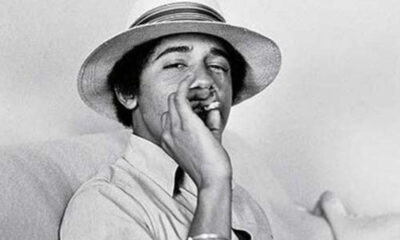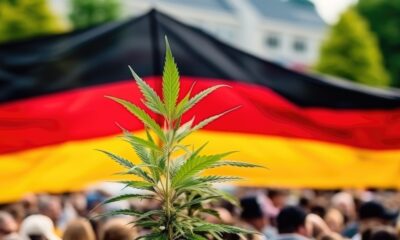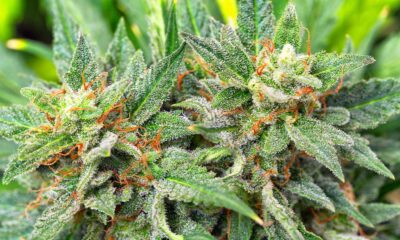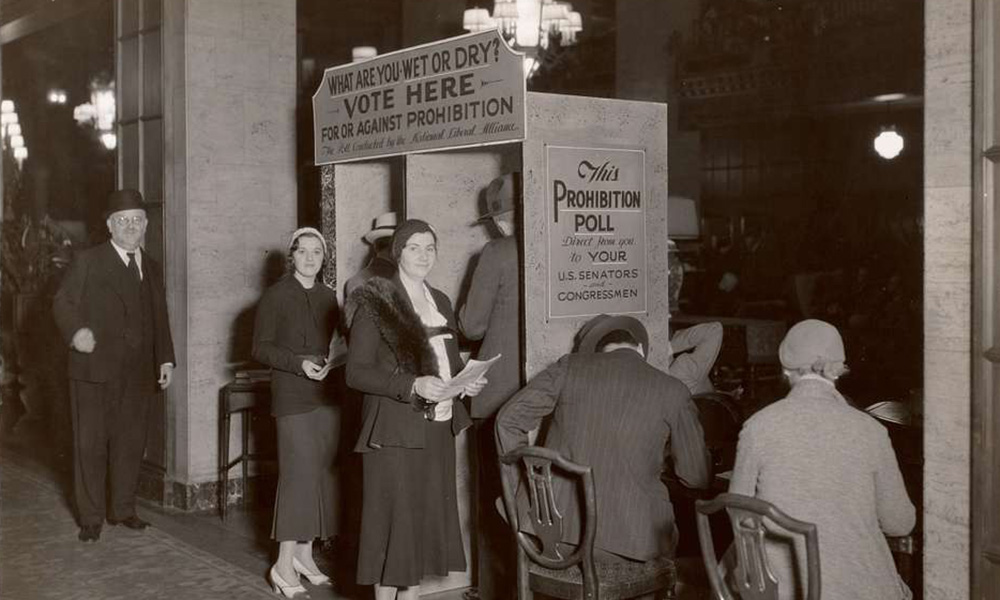
Joint Opinions
The History of Prohibition: Cannabis vs Alcohol
Both cannabis and alcohol have been demonized at times in history, yet only one remains federally illegal.
At the stroke of midnight, January 16, 1920, America deemed alcohol illegal, and the prohibition era began. All hell broke loose leading up to this infamous event, with people holding riots and rallies, fighting for their rights to distill, ferment and work with alcohol as a legal commerce. This isn’t unlike the fights we’ve held for cannabis throughout the years. Old-school moonshiners, once the backbone of many small societies, were persecuted and imprisoned for fighting for their freedom to create private commerce. Backwoods raids, threats, murders and corruption followed this industry long before the days of “Dukes of Hazzard,” as they sped across the countryside to evade Boss Hog.
As amendments to constitutional law require three-fourths of the states to agree upon it, the only states that refused to enforce federal alcohol prohibition to end were, not surprisingly, Connecticut and Rhode Island. With heavyweight booze hustlers rubbing elbows with political entities at private clubs and speakeasies, it’s not too hard to understand how alcohol—which was readily available for corrupt commerce—became legal again within 13 years. Despite the religious onslaughts and self-righteous propaganda of the times, the need for jobs and economic stimulation far outweighed what had become a public fear of the negative health and moral effects of alcohol consumption.
On December 5, 1933, prohibition was repealed and alcohol was legalized. Not one famous moonshiner or advocate comes to mind, and we haven’t found any scientific or medical evaluations to support that the use of alcohol was needed.
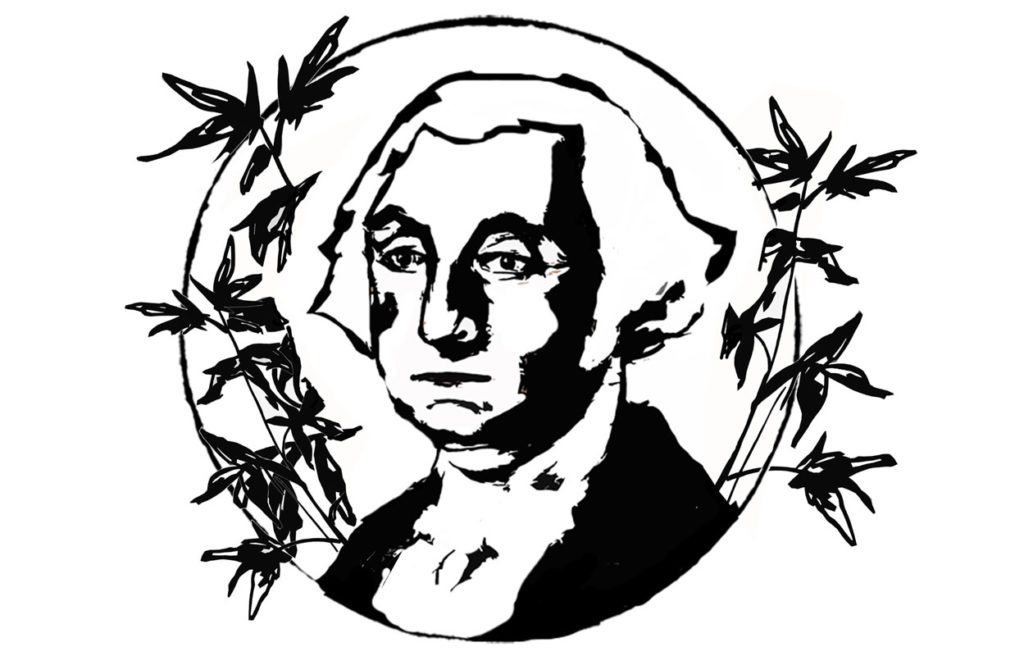
The Evolution of Cannabis Use
In contrast to alcohol, cannabis was not a common item, held in secret by decades of farmers from slavery and indigenous descent. History books tell us that there has been documented use of cannabis and hemp in the US as far back as George Washington. Political leaders reportedly chose hemp paper to write the Constitution of the United States upon, and the plant was also used to manufacture the first paper money. Hemp could be used to pay taxes and, at times, was a requirement to have agricultural property and public stipends.
But as for smoking, this was considered a “savages’ practice.” Many loyal British confidants stayed in alignment with tobacco as it made its way into the hands of being governed and controlled. Cannabis smokers historically concealed their use, anxious from the opinions of racists and uneducated society members. As for hemp and the textile applications, these were lobbied against and inevitably overthrown by the biggest businesses running the nation at the time. Those businesses happened to be associated with oil, cotton, corn and, yes, alcohol.
The Prohibition of Pot
Cannabis (not species defined) was first prohibited in 1937 under the Marijuana Tax Act. The law aimed to control cannabis’ growing popularity, as society had become more accepting of its use, thanks in large to the popular jazz scene. Unfortunately, lawmakers seemed to forget about America’s self-reliance on the cordage created by the plant.
Up until this time, hemp had been massively produced in Russia and Asia. As World War II loomed, Japan was regarded as a leader in hemp production. The “Hemp for Victory” campaign was created to revive the hemp production industry in the US as international supplies became unavailable during worldwide dispute. The US government filed its first patent rights on hemp fibers as a commodity in tandem with ad campaigns to encourage people to cultivate the plant.
After the war ended, countries followed American federal law, possibly to avoid more conflict and to stay in compliance with what was now held as the global governing force. Soon after the abatement, America again dropped its need for colonial cannabis textiles, as producing overseas proved to be much more cost-effective. As prohibition tightened, most countries instated severe bans and laws that threatened the lives of those involved. India remained a quiet cannabis producer as a non-official internationally accepted hub and remained so until recent years. Most, if not all of those countries, had never prohibited the plant’s farming in the past; some even relied on its production for agricultural revenue.
These points in history, where there’s an obvious timeline and motivation, aren’t singular. We can see the creation of government laws, taxation and regulations echo the needs for commerce in which sector it seems fitting. The key aspect is to have a prospect for governing. What the higher powers can’t profit from, they will not back. Laws are made by lobbyists whose funding perpetuates the very core of our economy. The alcohol and tobacco industries have applied excessive funds to keep cannabis illegal, knowing that its occurrence would lessen their profits and market share.

Hemp for Victory: Part Two
The passing of the 2018 Farm Bill ushered in a new era in plant commerce. This change in policy allowed the relaxing of international laws and launched an innumerous number of new businesses and farms worldwide. It seems the race to lead the way in hemp production is yet again underway.
The burgeoning aspect of alcohol taking the greatest hold on America and beyond is due to timing, science and focus. When the entry of cannabis was introduced, little was known about the plant by Western man. Alcohol was popular and had been widely consumed for centuries, including the use of wine with crackers during religious ceremonies.
The advancement of science and pharmaceuticals in the 20th century is what’s truly brought cannabis to light, following in the footsteps of other plants, including opium poppies and willow trees. Scientists can synthesize and manipulate the elements within cannabis that are profitable, adding an extra layer to its value aside from textiles that were once the focus.
The Next Chapter
With the federal rescheduling conversations ramping up to equate political attention, it’s crucial to recognize that rescheduling cannabis from Schedule I to Schedule III puts the power in the hands of those with vetted funds and affiliations. To truly free it—at least to the point of what alcohol is—we must deschedule it completely and force the ones in commerce to align their morality with a free industry that provides equity and reparations to its people.
Botanical science is the present need. The ability to separate the two forms of cannabis sativa has been the downfall of our cultural clarity. Through decades of selective breeding, high THC (delta-9) has mutated and was not present during the original days of ditch weed that created Reefer Madness. The conversations within media are muddled with the lack of understanding that one plant species has two outcomes. This must be ratified by specifying that hemp “marijuana” is separate and distinctly different from cannabis “marijuana.” Indica, Sativa or Ruderalis species with high levels of THC, regardless of their visual characteristics, should be categorized independently.
It’s time to use scientific analysis rather than vague comparisons to categorize and understand the diverse effects of cannabis and hemp, much like we do with spirits and alcohol. We shouldn’t let the focus on these plants be solely about dominance.
Our Current Position
On April 30, 2024, the DEA agreed to endorse the current rescheduling of medical cannabis from the “highly addictive” Schedule I drug classification (heroin/cocaine/LSD) to medically accepted Schedule III classification (Aspirin/Codeine/testosterone).
The choice to reclassify instead of deschedule cannabis may leave room for a future of complex standards. If this federal oversight is signed into law without proper public understanding, it could delete the last of small farms. Medical standards are large investments. Costly buildouts and operating costs leave few small pharmaceutical manufacturers in business. Hardly anyone knows an Aspirin farmer.
More cannabis legislature is on the horizon. Whichever “act” is chosen will certainly define the next steps in the Current Good Manufacturing Practice (CGMP) implementations. Farmer-friendly bills such as the MORE Act and US Representative Nancy Mace’s OFF Act could change the direction of federal gains.
Large companies that lobby for the laws to be passed have more funds than all the Americas farmers combined. Use your voice and your platform to spread the word on potential risks of allowing these decisions to be made in federal government without the input of those who are in the trenches of cannabis culture.







